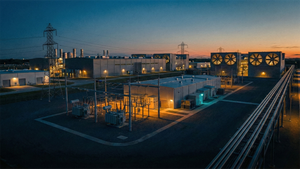The Sweetener Switch: How Big Agriculture Reshaped the Soda Industry
In the 1980s, import quotas led to a surge in sugar prices, prompting Coca-Cola to switch to high fructose corn syrup, introducing New Coke. Recently,, officials announced a shift back to sugar in some products, illustrating the enduring interplay of politics and business.

Champaign, United States, July 24, 2025 -- During the 1980s, President Reagan's introduction of import quotas triggered a seismic shift in the American food and beverage industry. The quotas, designed to promote the mainstream adoption of high fructose corn syrup (HFCS), particularly influenced iconic products such as Coca-Cola. Reagan's policy was seen as a supportive move towards Big Agriculture companies, notably ADM. The CEO of ADM had a personal relationship with Reagan, further intensifying the connection.
When ADM first developed HFCS in the early 1980s, its cost was ten times that of sugar. However, Reagan's 1981 Farm Bill introduced sugar quotas that caused sugar prices to surge, rendering HFCS as a more cost-effective sweetener.
One of the most notable outcomes of Reagan's sweetener policy change was the controversial introduction of New Coke in 1985. Amid escalating sugar costs and the industry's gradual transition to HFCS, Coca-Cola aimed to revitalize its brand, leading to a reformulation of its flagship product. However, the move backfired; widespread consumer backlash ensued over the change in taste, forcing the company to revert to its original formula, now rebranded as "Coca-Cola Classic", and sweetened with HFCS.
New Coke's introduction, while deemed a marketing disaster, has sparked speculation that it was a strategic move to mask the shift from sugar to HFCS. By launching and rapidly withdrawing a significantly different tasting product, Coca-Cola may have smoothed the transition to HFCS without consumers noticing the subtle flavor shift.
These events, extensively documented in T.H. Harbinger's book, The Farm Program, available at: https://www.insightsoninnovation.net/farmingandfood, mark significant milestones in the history of the Coca-Cola Company and the broader beverage industry. These shifts, shaped by governmental policy and market forces, also underscore the influence of consumer preferences on corporate decisions.
In the grand scheme of American history, the choice of sweetener in a soda might seem trivial. However, it raises larger concerns about health and nutrition, economic policy, and corporate influence. The ongoing debate over HFCS and sugar isn't just about the contents of a Coke can. It's about societal decisions and upheld values.
"The Farm Program" delves into the interplay between agriculture, government policy, and its consequences. The book notes, "Of more benefit to ADM is the Agriculture Department's sugar program. The program operates like a mini-OPEC, setting prices, limiting production, and forcing Americans to spend $1.4 billion per year more on sugar. ADM has no interest in sugar. Its concern is to keep sugar prices high to prevent Coke and all the other ADM customers that replaced cane sugar with corn sweeteners from switching back."
Recently, government officials and Coke executives announced the switch from HFCS back to sugar for some products. This move again reflects the interplay of politics, business, and consumer preferences. The potential outcomes—whether it contributes to a healthier nation, revitalizes the sugar industry, or merely alters the taste of America's favorite soda—remain uncertain.
One thing is clear: the story of Coca-Cola's sweetener choice is a fascinating chapter in America's history. For an in-depth exploration of these events, T.H. Harbinger's "The Farm Program" is available at https://www.insightsoninnovation.net/farmingandfood.
Contact Info:
Name: james lenz
Email: Send Email
Organization: Insights on Innovation
Address: 507 Haines Boulevard, Champaign, IL 61820, United States
Website: https://www.insightsoninnovation.net/
Source: PressCable
Release ID: 89165499
In the event of any inaccuracies, problems, or queries arising from the content shared in this press release, we encourage you to notify us immediately at error@releasecontact.com (it is important to note that this email is the authorized channel for such matters, sending multiple emails to multiple addresses does not necessarily help expedite your request). Our diligent team will be readily available to respond and take swift action within 8 hours to rectify any identified issues or assist with removal requests. Ensuring the provision of high-quality and precise information is paramount to us.
More News
View More




Recent Quotes
View MoreQuotes delayed at least 20 minutes.
By accessing this page, you agree to the Privacy Policy and Terms Of Service.